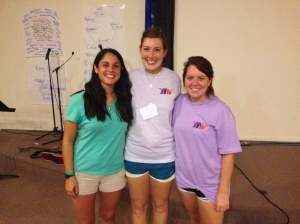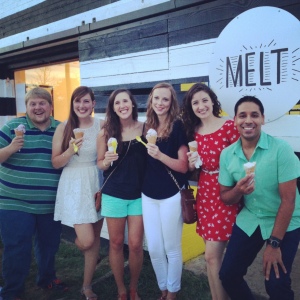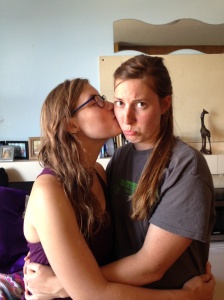Here’s the sermon I preached yesterday at Covenant!
(Reflection on sermon writing: It’s really strange writing how you would talk, and trying to make it sound natural and like you aren’t reading a piece of paper.)
Texts:
Psalm 133
How very good and pleasant it is
when kindred live together in unity!
It is like the precious oil on the head,
running down upon the beard,
on the beard of Aaron,
running down over the collar of his robes.
It is like the dew of Hermon,
which falls on the mountains of Zion.
For there God ordained a blessing,
life forevermore.
Mark 4:26-32
Jesus also said, “The kingdom of God is as if someone would scatter seed on the ground, and would sleep and rise night and day, and the seed would sprout and grow, he does not know how. The earth produces of itself, first the stalk, then the head, then the full grain in the head. But when the grain is ripe, at once he goes in with his sickle, because the harvest has come.
He also said, “With what can we compare the kingdom of God, or what parable will we use for it? It is like a mustard seed, which, when sown upon the ground, is the smallest of all the seeds on earth; yet when it is sown it grows up and becomes the greatest of all shrubs, and puts forth large branches, so that the birds of the air can make nests in its shade.
“How very good and pleasant it is when kindred live together in unity.”
I have been doing a lot of living together in unity this past year. How very good and pleasant it has been! But when I read this verse a few weeks ago and started writing this sermon, I wondered who exactly my “kindred” are. Am I living with them? So, as any new sermon-writer does, I turned to the dictionary.
The first listing defines kindred as “a person’s relatives collectively.” Okay, yes, but I no longer live with any blood relatives, and I don’t think that’s really what this verse is talking about. I kept reading, and the fourth definition down is “natural relationship; affinity.” So, people who get along well together- like kindred spirits. As a young adult volunteer, that’s exactly who I’ve been living together in unity with- two kindred spirits. One of the 5 core tenets of the YAV program is living in Intentional Christian Community. Even though I’ve been living in one for the last ten months, I am still not entirely sure how to explain intentional community. Back to the Internet! Trusty Wikipedia told me that an intentional community is “a planned residential community designed from the start to have a high degree of social cohesion and teamwork.” This very piece of the YAV program was a big part of why I wanted to spend my first year out of college this way. I hungered to be part of a community that would be more than regular roommates- people who would love and support me and who I could love and support in return. I imagined myself so wrapped up in this community that I wouldn’t be available to other relationships. How good and pleasantly I was surprised! I have found myself with a piece of my heart in many different communities this year. All of them are unique and all of them feel like home, and all of them help me see God more clearly.
Living together in unity stretches beyond the people we share a roof and walls with. In addition to our little house of three YAVs, I have found a place to belong in the national and international YAV community, in my job placement at Women’s Lunch Place, and of course in this place- Church of the Covenant, while still maintaining relationships back home in Texas.
The first community I am loyal to is obviously my fellow Boston YAVs. In our YAV house, mustard is the favorite condiment. We’ve gone through jars of the stuff- Dijon, spicy brown, coarse ground- in salad dressings, on the thousands of pretzels consumed, in recipes, not by the spoonful, I think, although you’d have to double check with my roommate Jenn on that. In our favorite type of mustard, coarse ground, you can see the seeds almost as they are. Working in Food Justice, we think a lot about what our food looked like before it was put in jars, but with coarse ground mustard, you don’t have to use as much imagination. Those seeds are small. One of those seeds on a pretzel wouldn’t pack much of a punch. But according to the Gospel of Mark, faith that size can grow and put forth large branches.
Before my year started, I had some really beautiful images of what this YAV community would look like, although I did know it would be difficult at times. I envisioned us reading evening devotionals together every night, planning the meals for the week, and sitting around chatting about how God is at work in the world. That picture is close, but real life is not exactly that idyllic. Now that I’m ten months in, let me tell you: it seems to me that intentional community just means that your roommates are extra up in your business. But how lucky I am that the roommates who are all up in my business are two beautiful, strong, passionate, adventurous women who also want the world to be a better, less hungry place. We challenge each other. We DO sit around and talk about the injustice of the food system, the oppression of the poor, and how people (including ourselves) are rising up to help. These two kindred spirits show me how powerful God is on a regular basis.
There is another YAV community that it’s really fun to be part of. The greater YAV program has about 20 sites with 90 YAVs across the country and around the world. We were fortunate enough to all gather together last August for a week of orientation before we departed to our respective placements. It was thrilling to be in the middle of the collective energy of 90 passionate young adults, getting ready to embark on the scariest year of our lives. After carrying around plenty of anticipation and many doubts by myself all summer, it was so refreshing to be around a bunch of other people with similar worries, excitement, and passion. Now, we keep up with each other through our blogs, a Facebook group, the monthly newsletter, and regional retreats. I see God in this group when I read a story on someone’s blog that sounds similar to an experience I had recently, or when I log into Facebook to see that someone across the globe has posted a prayer of encouragement. Although we are not living in the same dwelling, we are 90 kindred spirits living in unity- lives cast from the same mold but in all different colors, all doing God’s work.
Working at Women’s Lunch Place has given me a peek into a type of community that is entirely different than anything I’ve seen before. The women who go to WLP have a strong bond even if they have nothing else in common besides the food they eat for lunch every day. They look out for each other whether or not they are kindred spirits. A few months ago, at a memorial service, there was an open sharing time when the women could get up and say a few words about the two ladies who’d passed away recently. I heard amazing stories of these women protecting each other, caring for each other, despite their striking differences, bonded by the common thread of WLP. Being part of a community sometimes means connecting with those you wouldn’t relate to if you weren’t entwined in a web of unity.
I have been unconditionally accepted into this close-knit body of people here at church of the Covenant. It’s very easy to enter a place when people know you’re coming and have been preparing the warmest welcome, but I’ve also seen newcomers walk blindly into a service and meet just as genuine of a reception as I did. These people here at Covenant are the types who want to spend holidays together, They show up to support each other at life events, big and small. These people want to stay late after the service, gabbing and eating organic, vegan, local potluck dishes. And these people want to make sure you feel like you’re one of them, immediately. One way you know you’ve truly been integrated into a new place is when you are then expected to welcome those who’ve come after you. After attending Covenant for less than a month, I found myself chatting with newcomers about how wonderful this church is! Surely the Holy Spirit is between us and among us, fusing us together in love.
Two weeks ago, I went to Montana to be enfolded in yet another loving, graciously welcoming group: the EcoStewards. In the mornings, we practiced yoga together. As an intermittent yogi, I am familiar with the ending salutation “Namaste.” Yoga instructors will tell you it means, “the light in me recognizes the light in you.” But I have never practiced yoga in a purely Christian setting. Becky Evans, who was leading the sessions, ended our practice the first morning by narrowing down that broad explanation of Namaste as, “the God in me recognizes the God in you.”
One of my favorite parts of having faith is recognizing God in my surroundings. I love looking for God’s presence in nature, in experiences, in a good meal, and of course in other people. But until I heard this interpretation of the phrase Namaste, I had completely forgotten to look for God inside myself! It’s easy to see God in others when you look, just look around right now, but sometimes it can be challenging to remember that God is in oneself.
We need communities to remind us that God lives inside us.
We need to remind others that God is in them.
We need to remind ourselves to look for God in all these places.
Maybe God’s presence inside us is as small as a mustard seed.
Maybe someone else needs to sow a mustard seed-sized bit of God in our heart
Maybe we need to do the cultivating in others. We all sleep and rise, and the seeds sprout and grow, and we do not know how. Maybe, with the encouragement of our communities, that presence will grow up and become the greatest, and put forth large branches.
I recognize the God in you. In whom do you see God?

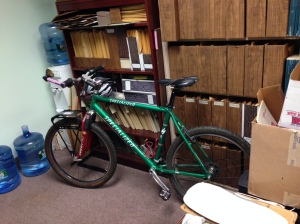

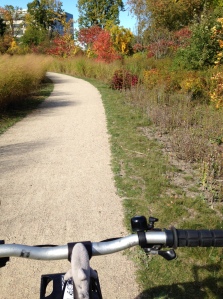


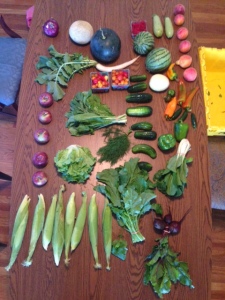 The bounty of our first CSA pickup!
The bounty of our first CSA pickup! Ten jars of tomatoes.
Ten jars of tomatoes.



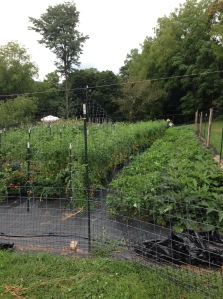
 My smallgroup was the best ever.
My smallgroup was the best ever.
